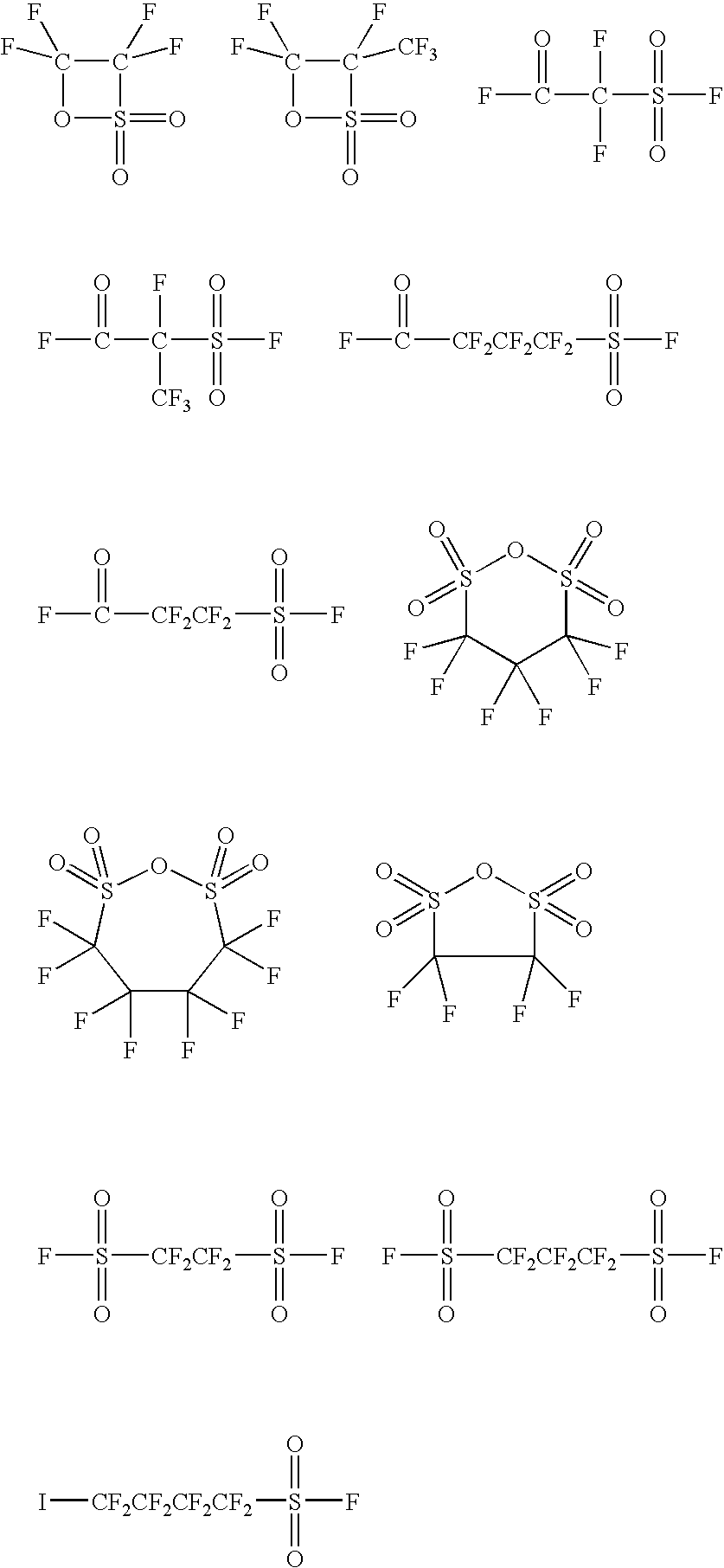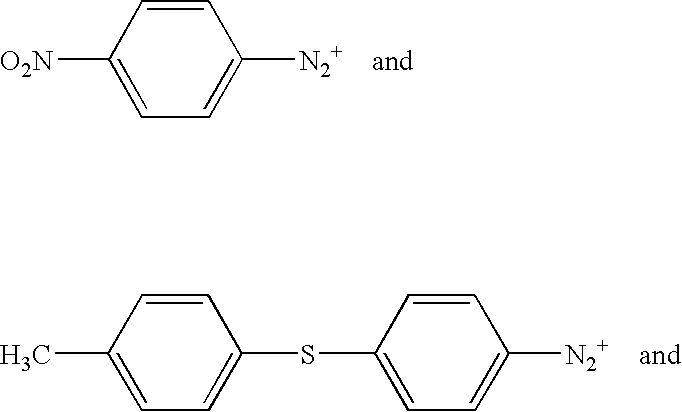Ionic photoacid generators with segmented hydrocarbon-fluorocarbon sulfonate anions
a technology of hydrocarbons and generators, applied in the field of ionic photoacid generators, can solve the problems of limiting the field of ionic materials' utility, reducing the solubility of organic systems, and limiting the selection of ionic pags for semiconductor photoresist applications, etc., and achieves fast photospeed, high acid strength, and strong catalytic activity.
- Summary
- Abstract
- Description
- Claims
- Application Information
AI Technical Summary
Benefits of technology
Problems solved by technology
Method used
Image
Examples
examples
Glossary
DescriptorDescription / Formula / StructureAvailability AdogenADOGEN ™ 464; methylSigma-Aldrich,trialkylammonium chlorideMilwaukee, WI1,4-butane sultoneSigma-AldrichCHVESigma-Aldrichdiallyl amineHN(CH2CH═CH2)2Sigma-Aldrichdiethyl sulfate(C2H5O)2SO2Sigma-Aldrichdiglyme(CH3OCH2CH2)2O; AnhydrousSigma-Aldrich(99.5%)dimethyl sulfate(CH3O)2SO2Sigma-Aldrich1,3-hexafluoropropylene disulfonic anhydridePrepared according to U.S. Pat. No. 4,329,478 (Ex 1)DTBPI-ONfDaychem, Dayton, OHDTBPI-PFOSDaychemDTBPI-OAcDaychemEPON ™ 828Shell Chemical,ERL-4221Union Carbide, Danbury, CTFSO2(CF2)3COF4-(fluorosulfonyl)hexafluorobutyrylCan be prepared asfluoridedescribed in U.S.Pat. No. 2,732,398(C6H5)3S+−BrTriphenylsulfonium bromide; highDaychempurity sampleITXisopropyl thioxanthoneSigma-AldrichKFPotassium fluoride; spray driedSigma-Aldrich(99%)PGMEADOWANOL ™ PMA; propyleneDow Chemical,glycol methyl ether acetate;Midland, MICH3CO2CH(CH3)CH2OCH3tributyl amine(C4H9)3NSigma-AldrichVEX 5015Vinyl etherAlli...
PUM
| Property | Measurement | Unit |
|---|---|---|
| wt % | aaaaa | aaaaa |
| wt. % | aaaaa | aaaaa |
| wt. % | aaaaa | aaaaa |
Abstract
Description
Claims
Application Information
 Login to View More
Login to View More - R&D
- Intellectual Property
- Life Sciences
- Materials
- Tech Scout
- Unparalleled Data Quality
- Higher Quality Content
- 60% Fewer Hallucinations
Browse by: Latest US Patents, China's latest patents, Technical Efficacy Thesaurus, Application Domain, Technology Topic, Popular Technical Reports.
© 2025 PatSnap. All rights reserved.Legal|Privacy policy|Modern Slavery Act Transparency Statement|Sitemap|About US| Contact US: help@patsnap.com



